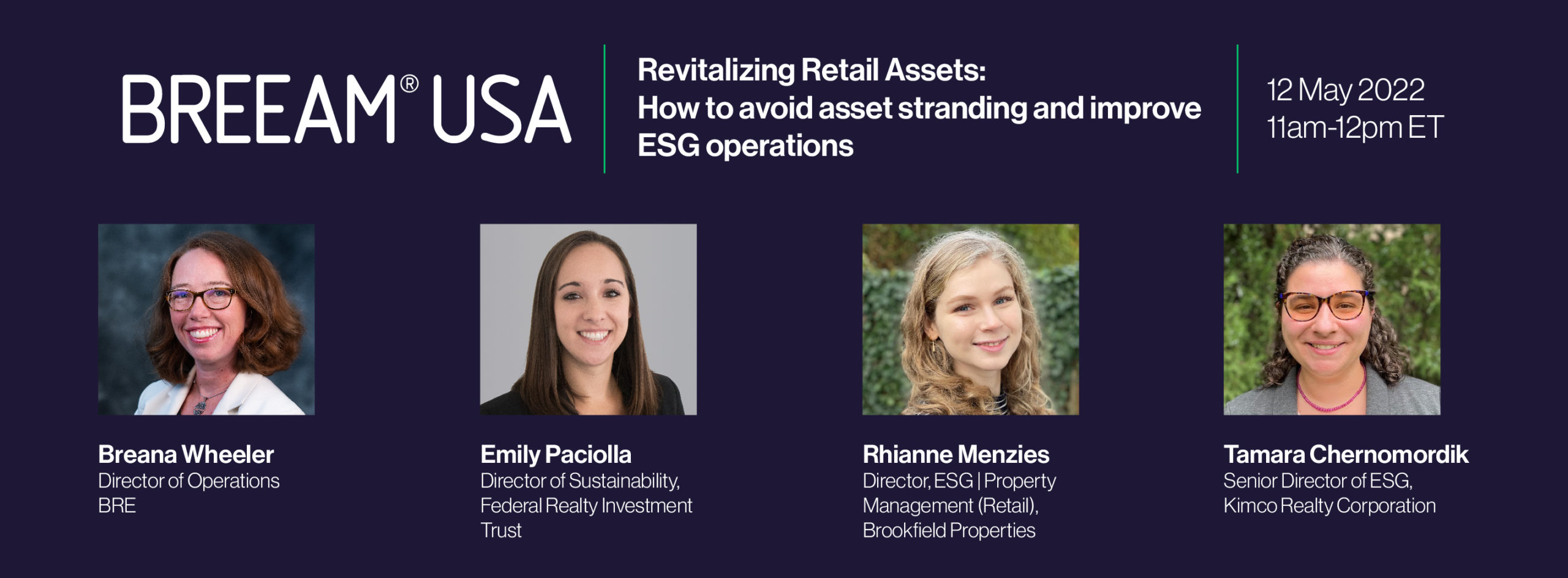Opportunities and challenges for sustainability among retail assets
In the wake of the pandemic and subsequent shifts in consumer behavior, the retail sector has undergone significant changes demanding swift adaptation in recent years. Despite the challenges surrounding an increasingly critical need for flexibility, today’s retail market is strong, and the revitalization of retail assets is top-of-mind for developers, owners, operators, and investors throughout the industry. As the sector is poised for future growth, retail owners are implementing scalable sustainability initiatives to meet the challenges of the future, effectively bringing together communities with the shared goal of realizing a greener tomorrow.
Organizations have already begun reimagining assets and working in tandem with tenants to integrate sustainability practices across development and operation processes. Through trends like mixed-use retail space, the sector has been able to deliver dense, livable, and sustainable retail-anchored communities; by acknowledging the impact of retail assets on the surrounding community, operators in this space have the ability to hone in on the ‘S’ in ESG and improve the quality-of-life for various stakeholders. Looking to the future, there is ample opportunity to build on emerging pathways toward ESG-centric activity in the sector and to implement strategies that drive a net zero carbon (NZC) future.
Recognizing the importance of continuous sustainable improvement in the retail industry, BREEAM recently invited experts from across the sector to come together and discuss their perspectives, experiences and insights on the future of ESG in the space.
Panelists included:
- Emily Paciolla, Director of Sustainability at Federal Realty Investment Trust
- Tammy Chernomordik, Senior Director of ESG at Kimco Realty Corporation
- Rhianne Menzies, Director of ESG at Brookfield Properties

Moderated by BRE’s US Director of Operations Breana Wheeler, this discussion explored how we can continue to revitalize retail assets, specifically through a sustainable framework. Conversations touched on the deep-rooted value and role of retail in communities, the importance of creating operational strategies in collaboration with these communities, and ways in which the industry can implement sustainability best practices that meaningfully advance NZC solutions. The panelists had a variety of insights, anecdotes and experiences to bring to the table, including:
Retail assets are cornerstones of communities, and it is important that the development and operations of these assets are reflective of the region’s needs.
“One of the big things for us from a diversity and equity perspective is having our properties represent the communities that they sit within,” said Rhianne Menzies. “We have a program called Partner to Empower — it’s about getting Black- and minority-owned businesses into our malls and giving them resources and funding to grow.”
“Real estate really is local,” added Emily Paciolla. “We prioritize making shoppers feel like this is part of the fabric of the community. We take pride in the fact that our employee base reflects the communities in which we sit, and we firmly believe that you can’t fully serve the community if you don’t understand their needs.”
“If anything, the pandemic highlighted and strengthened the need for partnership with the unique and diverse needs of our tenants and communities. The pandemic is something we all went through but all experienced differently,” said Tammy Chernomordik. “At Kimco, we listened to our tenants, we fast-tracked outdoor dining for restaurants, we implemented curbside pickup to help our stores and grocery stores, and helped them navigate PPP funding through our Tenant Assistance Program… just really an enhanced focus on partnership.”
The rise of mixed-use assets that fortify communities while achieving sustainability goals:
“It is really about creating those live-work-play atmospheres that are very attractive to both established and growing markets,” said Chernomordik. “There is so much to be gained when everything you need for your life is within walking distance. There is also a lot of opportunity for sustainability benefits, including reduced emissions from transportation and people using public transportation in a more condensed urban space. Ultimately it creates a lot of benefits, and it also creates spaces for communities to gather.”
“Federal Realty started down the mixed-use path in the 90s,” Paciolla shared. “Adding density makes all the sense in the world, especially from an ESG perspective. Investing in mixed-use developments gives us a great chance to flex our creative muscles. There is a lot more opportunity for creativity. You can test out different strategies, like material choices or efficiency standards, and use lessons learned to apply successful strategies throughout a portfolio.”
“There is a lot of exciting opportunity in how the whole community can talk to each other,” noted Menzies. “As we’re pursuing new [mixed-use] developments, we can add in asset-wide systems that directly support the retail side of the business, and it’s a win-win.”
The first step to achieving net zero is honing in on efficiency improvements — once processes are optimized, the next steps towards NZC can be implemented:
“For us, net zero is about first focusing on efficiency improvements. You have to optimize to a certain point, and after that, we can explore RECs and/or carbon offsets…with the primary focus on efficiency gain,” shared Chernomordik.
“For us, it’s about intersectionality and interdependency,” added Menzies. The shift from us saying, ‘this is what we consume’ to saying, ‘this is what we have control over’ or asking, ‘what do we touch?’ So that’s what we’re taking a look at as an opportunity and exciting challenge.”
“The first priority is energy efficiency; second to that is asking where the energy is coming from,” said Paciolla. “We have a pretty substantial green energy procurement program where we can enter into supply agreements with low carbon or green carbon providers. This is not the long-term solution — we are all working on figuring out how to avoid offsets. The question that we’re facing now is ‘how can we take that a step further and get closer to true net zero, where we are not offsetting, but generating our own power?”
If you missed the webinar, you can view the full recording here.
An overview of this webinar, including key takeaways and industry-wide themes, can also be found in the Forbes article “What Retail Real Estate Owners Are Doing To Be Sustainable And Why It Matters.”
And if you want to hear more from BREEAM in the US and around the world, sign up for our newsletter to receive the latest news from our world-leading experts and alerts about upcoming webinars and events.
Share
Tags
BREEAM USA news
Browse other BREEAM USA news

Retail Market Breakdown: Sustainability Trends and Outlook

Championing Biodiversity for Real Estate

Key Takeaways from Climate Week NYC 2024

BREEAM New Construction Version 7 technical manual and summary of changes document

Navigating Sustainability: Insights from BREEAM and GRESB Leaders
Get in touch
Contact us now or call us on +14152981619 if you would like to talk to our team about how BREEAM can support you.
Return to BREEAM USA Homepage